SVP, Global Pre-Sales & Product
As retailers wrestle with the routine challenges of supply chain disruptions and fast-changing customer preferences, unusual weather adds yet another devilish factor to the equation. With summer fast upon us, should analysts really be allocating swimwear and other seasonal items based on an assortment plan they devised four to six months ago?
Wild Weather Affects Retail Assortment—And a Lot More
Lay people and politicians have debated climate change for many years: How significant it is, how much worse it might become, what’s causing it—even whether it actually exists (although the science on that is settled). However, I’m sure we can all agree there have been drastic changes in weather patterns over the last several years.
For example, the northwestern United States recently received shocking amounts of snow over a prolonged winter and is now experiencing cooler than average temperatures into the spring. In 2022, tornadoes ripped through Arkansas, Alabama, and Mississippi, and Florida got walloped by Hurricane Ian, a category 5 hurricane that was the third-costliest US weather disaster on record and the deadliest to strike Florida since 1935. In fact, every continent has broken various weather records over the last decade as more frequent and more severe storms, heatwaves, droughts, and other events have markedly affected people and infrastructure, sometimes devastatingly so.
My point here is not to rail against the dangers of climate change. Rather, I want to make clear that, given weather’s increasing impact on our daily lives and behaviors, demand forecasting is really the retailer’s key signal for determining the best approach to the overall assortment management process. Retailers must evaluate not only trends and seasonality, but also causal factors such as weather—and that’s why you need a robust AI-driven forecasting engine.
Three Ways to Use Weather as a Retail Demand Forecasting Signal
There are three different opportunities for utilizing weather as an overall forecasting signal.
Weather and Short-Term Retail Demand Forecasting
With short-term demand forecasting, we are typically forecasting up to 10 days ahead for replenishment decisions. Using reliable weather predictions—such as forecasted temperatures, snowfall, and precipitation—will further refine the overall future demand. Historical patterns of high snowfall, for example, can be modeled and used to understand how overall store demand (foot traffic, online sales) will be affected by the inclement conditions.
Weather and Medium-Term Retail Demand Forecasting
Allocation decisions are typically made when considering the next six to eight weeks. This is where weather information also drives adjustments to the original strategy. If the US northwest experiences an irregularly cold spring, this signal should inform a change in distribution. Shorts and swimwear may then be redirected to southern stores to avoid overstocking and costly markdowns up north. Opportunistic buys are also another key medium-term driver. Take advantage of intelligent AI/ML recommendations by quickly pivoting to find additional sleds ahead of a snowstorm, for example.
Weather and Long-Term Retail Demand Forecasting
An advanced forecasting engine cleanses past historical data to take weather (and other events) into account. Hurricanes and tornadoes, for example, may be specific, one-time events that we want to account for in the historical data but ensure we are not planning for these events in the future. Also, overall hind sighting and correlation analysis enable buyers and planners to fully understand what impacted their overall business, then strategically adjust going forward.
Impact Analytics: Your Weather-Ready Demand Forecasting Platform
The Impact Analytics next-generation AI/ML-driven statistical forecasting platform is critical to the success of your end-to-end merchandise planning, replenishment, and allocation process.
Most demand forecasting engines use a “black box” approach; that is, these systems don’t reveal to users how they arrived at their recommendations. Impact Analytics takes a different, “glass box” approach: Our solutions make explicit the different forecast inputs and drivers—such as weather— that drive greater insights for you and enhance trust with your business users to execute with confidence.
That’s just one of the many reasons why Impact Analytics ranks in the top 100 of Fortune’s list of America’s Most Innovative Companies.
Take the Next Step
Want to learn more about how Impact Analytics forecasting enables you to meet customer demand by outsmarting the weather? Just click below!





